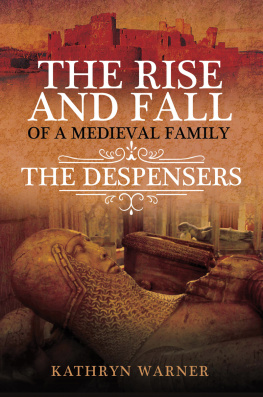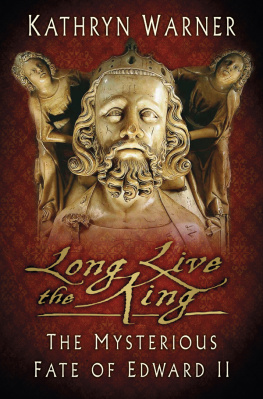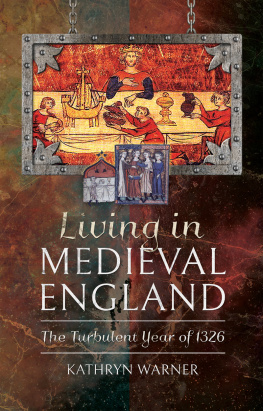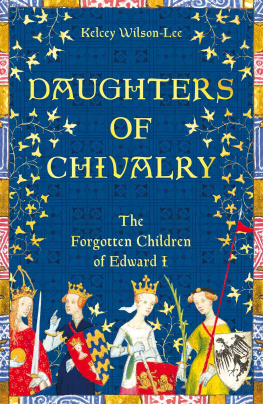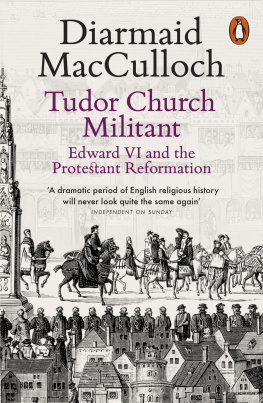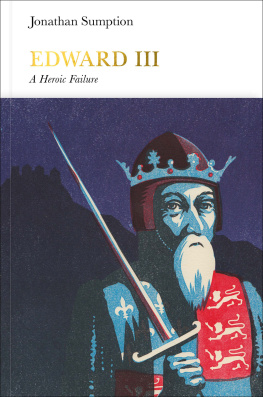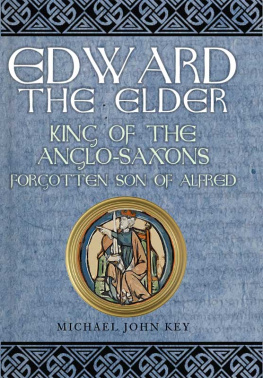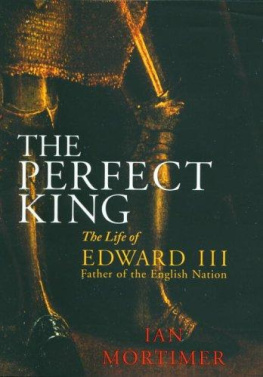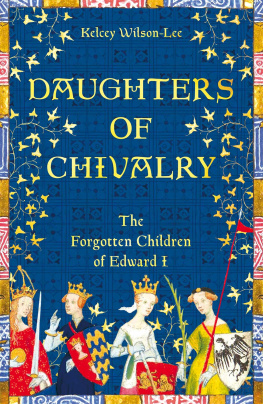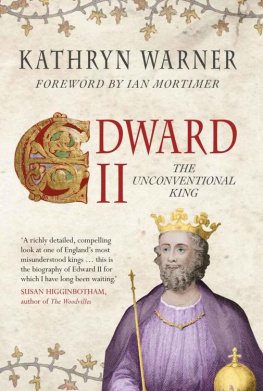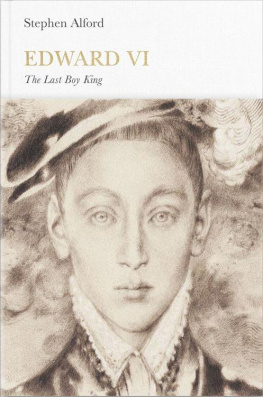First published in Great Britain in 2021 by
PEN AND SWORD HISTORY
An imprint of
Pen & Sword Books Ltd
Yorkshire Philadelphia
Copyright Kathryn Warner, 2021
ISBN 978 1 52675 027 3
eISBN 978 1 52675 028 0
Mobi ISBN 978 1 52675 029 7
The right of Kathryn Warner to be identified as Author of this work has been asserted by her in accordance with the Copyright, Designs and Patents Act 1988.
A CIP catalogue record for this book is available from the British Library.
All rights reserved. No part of this book may be reproduced or transmitted in any form or by any means, electronic or mechanical including photocopying, recording or by any information storage and retrieval system, without permission from the Publisher in writing.
Pen & Sword Books Limited incorporates the imprints of Atlas, Archaeology, Aviation, Discovery, Family History, Fiction, History, Maritime, Military, Military Classics, Politics, Select, Transport, True Crime, Air World, Frontline Publishing, Leo Cooper, Remember When, Seaforth Publishing, The Praetorian Press, Wharncliffe Local History, Wharncliffe Transport, Wharncliffe True Crime and White Owl.
For a complete list of Pen & Sword titles please contact
PEN & SWORD BOOKS LIMITED
47 Church Street, Barnsley, South Yorkshire, S70 2AS, England
E-mail:
Website: www.pen-and-sword.co.uk
Or
PEN AND SWORD BOOKS
1950 Lawrence Rd, Havertown, PA 19083, USA
E-mail:
Website: www.penandswordbooks.com
Introduction
The five daughters of Edward I and his first wife Queen Leonor were born between 1269 and 1282, and although they have often been ignored or neglected, this is changing: they are the subjects of a joint biography published in 2019, and of an article in an academic essay collection about their father, published in 2020. Louise Wilkinson, author of the academic essay, has pointed out how Edward I immersed his daughters in court ceremony, and both he and his son and successor allowed them to intercede on others behalf and to wield influence at court. Despite his reputation as a stern and ruthless leader, it is apparent that Edward I loved his daughters dearly, and recognised their value. One of them might even, if her youngest brother had died in childhood as her three other brothers did, have become queen-regnant of England. Edward I considered this possibility in 1290, and rather than stating that he wished his throne to pass one day to his younger brother and nephews, declared that his eldest daughter should inherit his kingdom after him.
It is often very difficult to write about medieval women, who tend to disappear from the written record when married, and even when not married only rarely hove into view in extant documents. None of the five royal sisters left a will, or at least, a will which still survives. For one of the daughters, it is impossible even to ascertain the date of her death, though we are lucky that with all of the five daughters of Edward I who survived into adulthood, we know their dates of birth, at least approximately. Personal letters were practically non-existent in the late thirteenth and early fourteenth centuries; diaries had not yet been invented; and even surviving household accounts are few and far between. It can, therefore, be very difficult, even impossible, to ascertain medieval peoples thoughts, feelings and motivations, and as is usually the case with medieval women, even kings daughters, the list of things we do not know about the five royal sisters is far longer than the things we do know. For example, we cannot know for certain what any of the
The five royal sisters lived in a world that was far more international and cosmopolitan than we might imagine. The women are, with their younger brother Edward II and Queen Mary I (b. 1516, r. 155358), the only English royals in history who had a Spanish parent. Their Spanish grandfather was canonised as a saint of the Catholic Church and is the patron saint of the city of Seville, and their parents wedding took place near Burgos in the north of Spain. Three of the five sisters married overseas, one into eastern France and the others into the patchwork of counties and duchies which is now Belgium, the Netherlands, northern France and western Germany. As well as the royal marriages which took place, several of the sisters were betrothed, ultimately unsuccessfully, into Spain, Germany, and the county of Savoy, which lies in modern-day France, Italy and Switzerland.
One of their brothers was born in Bayonne, south-west France, and another in North Wales. Their father Edward I, accompanied by their mother, led the last great Christian crusade to the Holy Land, and Joan, second of the five daughters, was born in the port of Acre, which is now called Akko and is situated in northern Israel, and is one of the oldest settlements in the world, first mentioned around 2000 BC. Nineteen years after Joan was born, her birthplace fell to the Mamluks, a Muslim dynasty of former slaves who ruled much of Egypt and Syria for centuries until overthrown by the Ottomans in 1517. Edward I was lord of Ireland and duke of Aquitaine in south-west France as well as king of England, and the sisters younger brother Edward II was the first heir to the English throne to be made prince of Wales. He also inherited their mothers county of Ponthieu in northern France; the fact that a king of England was born in Wales and inherited a county in France from his Spanish mother takes some unpacking. One of Edward Is uncles was king of Germany, and his aunts included the Holy Roman Empress and queen of Sicily, another queen of Sicily, the queen of Scotland, and the queen of France. Edward was a first cousin of the kings of France and Naples, the queen of Hungary, the empress of Constantinople, the duchess of Burgundy, and the Italian-born countess palatine of Saxony and landgravine of Thuringia; his sister-in-law was queen of Navarre in northern Spain and countess of Brie and Champagne in France; and his brothers-in-law included the king of Scotland, the duke of Brittany, the king of Castile and Leon, the archbishop of Toledo, the archbishop-elect of Seville, and a senator of Rome. One of his nieces was queen of Norway, and a nephew, the lord of Villena and duke of Peafiel, is considered one of the greatest Spanish writers of the Middle Ages. The daughters of Edward I were, therefore, born into a powerful network of relatives which stretched far across Europe.


